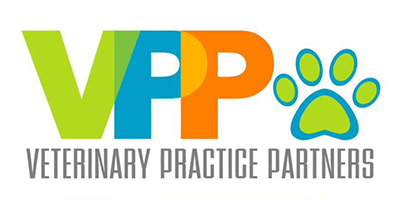Veterinary Practice Partners: Transforming the Vet Industry

Veterinary Practice Partners is transforming the vet industry by providing a centralized platform and data engine that enables vets to spend more time with patients and less time managing the business. VPP’s data engine drives operational efficiency, employee satisfaction/retention, customer retention, lower CAC and optimized financial performance.
Background
Founded in 2011, Veterinary Practice Partners (“VPP”) is a general practice veterinary platform operating across 20+ states. VPP has acquired 98 vet practices and built 4 de novo vet locations. Across the platform, VPP employs 250+ veterinarians. VPP provides its practices with a centralized platform, including a shared back-office system, which collects and aggregates valuable practice-level data. This data engine allows VPP to deliver best-in-class practice management insights that drive practice optimization (both topline growth and profitability) in the following ways:
1. Operations: Big Data drives efficiency
Scheduling: VPP’s data engine analyzes booking demand for specific days and time slots at each practice to better allocate staff during peak times and low times.
Inventory optimization: VPP practices are able to better manage their inventory levels since the data engine can forecast optimal inventory levels, which are dependent upon the types of procedures and services that each practice offers. By analyzing the inventory levels and procedure demand, VPP can recommend optimal inventory levels and automate supply replenishment depending on forecasted procedure volume.
Expansion & Relocation: VPP’s data engine analyzes local supply and demand data at its existing locations (as well as the geolocation of competing practices) to determine optimal vet practice locations (for relocation purposes or de novo locations).
2. Recruiting & HR: Big Data improves employee satisfaction and retention
Recruiting, Support & Labor Management: Tracking vet and supporting staff retention across its 79 vet practices allows VPP to recognize trends and patterns in hiring and employee turnover. For example, each practice reports rationale for employee turnover to VPP’s internal system so that VPP can understand and address specific drivers impacting turnover (i.e. lack of training and development, wages, relocation, etc.) Due to its data collection processes, VPP can target incentives specific to its various vet cohorts. For example, younger vets rank work-life balance higher than mid-career vets, while mid-career vets ranked practice ownership and performance-based compensation as their highest criteria for remaining with a practice (rather then venturing out on their own). These insights have helped VPP design a multi-pronged approach to retention – offering their vets a tiered system of rewards (scheduling flexibility all the way up to partial ownership), so that VPP has achieved one of the highest vet retention figures in the industry at 90% (the industry average for vet retention is 77%).
Training: Along with offering its vets tiered incentives, VPP has also designed courses for its employees through VetBloom, VPP’s in-house learning management system, which was developed from a robust set of staff and customer satisfaction feedback data.
3. Finance & Accounting: Big data optimizes financial performance
Reporting & Analytics: The Company’s POS system captures sales data, booking volume, waiting time and clinic throughput, which allows for each practice to understand its most common procedures, its most profitable procedures and its most time-consuming procedures. VPP uses each practice’s financial performance and KPIs to determine best-in-class metrics and provide each practice with competitive benchmarking analyses and actionable tips for improvement. VPP regularly features its best-performing clinics in its internal newsletter, along with the clinic’s scores, to motivate practices
Pricing: Tracking pricing and demand for services at the local, regional and national level for various services and procedures allows VPP to roll out pricing guidelines to its practices. Aggregating regional socioeconomic data with an overlay of competing local practices helps VPP determine if practices are overcharging or undercharging for procedures and services.
4. Marketing: Big data improves customer retention and lowers customer acquisition cost
Websites & social media: Measuring website traffic and bookings data across its practices’ websites and social media allows VPP to aggregate and recommend insights to practices that improve conversion and bookings. For example, VPP found that practices that included a “Book Now” button on its home page were most successful in converting new traffic to bookings.
Post-Appointment Surveys: Having a standardized post-appointment customer satisfaction survey allows VPP to compare practices’ customer satisfaction scores and trends over time. This data is critically important for VPP due to the misconceptions around quality that the company faces as a vet practice consolidator, rather than an independent practice.
Challenges & Opportunities
In order for VPP to fuel its data engine and add new practices to its platform, the operations team at VPP must quickly onboard new practices and integrate all back-office systems (inventory management, payroll, benefits, purchasing, etc.) with VPP’s existing system. This integration must be tailored to specific hospitals and can be challenging due to the wide variety of existing back-office systems (including pencil and paper). Data collection can also prove challenging if the new practice staff is not sufficiently trained on how to use the new system.

Source: https://www.vetpartners.com/



Really enjoyed reading your blog post! VPP is located near my hometown so it was fun to read about the advancements that the company has made over the past couple years. I sent a message to my friend who is a vet and her clinic actually part of the VPP platform. As you pointed out in your post, one of the biggest challenges that the clinic is facing is how to transition to using the new systems, as many of the vet technicians are used to paper data records. I foresee that once clinics are fully on board with this platform, there will be massive value in the time saved on the tasks that you outlined (especially scheduling and reporting).
I hadn’t thought about data for vets! I have a cat who is 100% a family member and I love the idea of treating him with the same diligence as we treat other things in this blog (cars, shopping, ride share etc). I loved the idea especially of using data for expansion opportunities – my vet in London in far away now that I moved apartments and it would be great if, as I’m sure if the case, as more of their clients move to an area they open are practice.